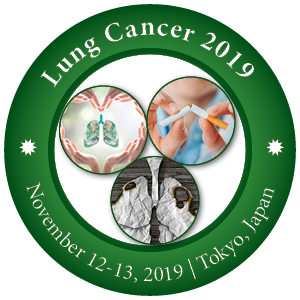Anh Tran TT
National Lung Hospital, Viet Nam
Title: EVALUATION PD-L1 EXPRESSION OF LUNG ADENOCARCINOMA WITH SP263 ANTIBODY KIT OF VETANA AND COMPARE TO SOME OF CLINICAL AND HISTOPATHOLOGICAL CHARACTERISTICS, SUPPORT IMMUNOTHERAPY - A CROSS – SECTIONAL STUDY IN VIETNAM NATIONAL LUNG HOSPITAL
Biography
Biography: Anh Tran TT
Abstract
Immunotherapy enhances natural immunity to fight cancer. Through PD-L1 check - points, this treatment activates patient's immune system to help identify cancer cells, select and skill them. This therapy is determined to be effective even in patients with PD-L1 expression, including weakness positive. This treatment brings opportunities for many people with cancer, especially lung cancer with non small cell carcinoma type, so the most subtyp is adenocarcinoma. The development in medicine science helps more and more patients having benefit and improving the quality of life with modern treatments. Currently there are many immunohistochemistry antibodies kít used for evaluating PD-L1 expression with each of the anti-PD1 or PD-L1 drugs. Ventana's SP263 kit is the most common in using to diagnose for widely responds to the patients’s demand in treatment
Our study has 102 patients with lung adenocarcinoma in the Department of Oncology – Vietnam National Lung Hospital, stain PD – L1 with Ventana's SP263 antibodies kit by automatic system BenchMark of VENTANA with OptiView DAB IHC Detection KIT, to increase the amplification expresion of PD-L1. Also, 44 patients were tested for EGFR mutations by COBAS z480 ver2 system.
The result for the rate of PD-L1 expression is 52%, the strong positive is 21.6%. In particular, the proportion of patient having PD-L1 expression with TPS from 1-10% is 9.8% and TPS> 10% is 42.2%. PD-L1 revealed the predominance in male, smoker, advanced stage, solid subtype, grade III, age group from 60 to 69 (p <0.05). The rate of EGFR mutations was 34.1%; the most is EGFR del19 and then is L858R in exon 21; 4.5% patients had T790M mutation. However, the correlation between the expression of PDL1 and EGFR mutation has not been determined because the number of patient who tested EGFR mutations in the study was not enough for calculation.

